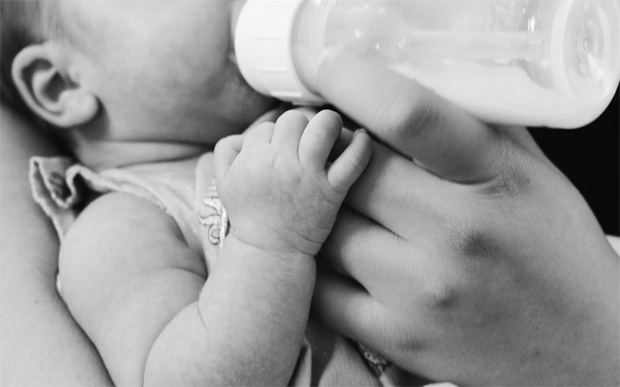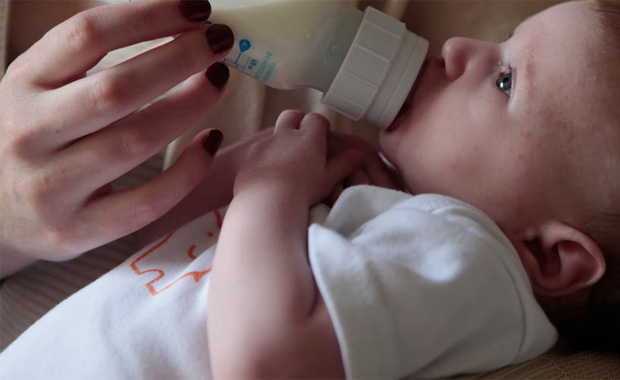6 Useful Tips For Bottle-feeding Your Baby

6 Useful Tips For Bottle-feeding Your Baby
Breast milk or infant formula can be given to your baby in a bottle. If you decide to bottle-feed your baby, he or she will need to learn how to drink from a bottle. To that end, here are some helpful hints for correctly feeding your infant.

- Choosing a Formula
98 percent of baby formula is made up of protein, carbohydrates, and fat. Because protein and carbs have the greatest influence on your baby’s digestion comfort, it is always best for parents to select a formula based on these elements. You can, for example, obtain a high-quality HiPP Dutch formula, which is produced with the best organic ingredients and includes all of the nutrients a baby needs to be healthy. Always ensure that the recipe is thoroughly mixed. The most crucial aspect of feeding your kid is not the brand you choose, but how well you mix it. Mixing mistakes are common, and they can cause newborns to consume milk that is either excessively concentrated or too diluted, which can be harmful to their health. Pay special attention to your formula’s precise mixing directions and follow them exactly.
- Making up Formula
Because infant formula powder is not sterile, it is critical to make sure the water is at the proper temperature while preparing it. Before adding the exact number of scoops of powder, measure the correct quantity of water at 70°C into the bottle. Scoop sizes vary depending on the brand. It’s important to avoid using too much or too little milk powder by accident.
Breastmilk is the best kind of nutrition for your baby. Infant formula is the only safe option for feeding your baby if you are unable to nurse or pump your breastmilk.
- Check the Temperature of the Milk
Securely attach the nipple and cap to your bottle. Let a few drops of milk or formula fall onto your forearm by turning the bottle upside down. Check that the droplets are cool or warm but not hot and that they trickle continuously from the bottle.
The opening in the nipple may be damaged if milk or formula appears to be pouring out of it. Before feeding your baby, replace the nipple with a fresh, disinfected one.
It’s far preferable to feed your infant colder breastmilk than to burn their mouths with an excessively hot ones.
- Baby Burping
Your child may need to be burped and may require small pauses during their meal. Hold them upright and softly rock or touch their backs to assist them to burp. When your baby is more at ease, continue feeding them. Discard any leftover formula milk once you’ve done feeding your baby since it might get contaminated and cause an upset stomach.
- Seating Position
Sit in a comfy chair with your baby when it’s time to feed them. The top of their head should be comfortably over the level of their stomach. Hold your child in your arms. They should be seated with their heads supported, allowing them to easily breathe and eat. Support your infant in such a way that they can gaze at you and are slightly lifted. To avoid choking, babies should not be fed while lying flat on their backs or alone with a propped-up bottle.
- How to Clean the Bottle?
To prevent germs from getting into the milk or infant formula you give your baby, keep your bottle-feeding supplies clean.
Hold bottle components and any other feeding equipment under running water to rinse them. The temperature of the water can range from mild to chilly.
Fill the dishwasher with bottle components and other feeding items. (To avoid getting tiny things stuck in the dishwasher filter, place them in a closed-top basket or mesh laundry bag.) If at all feasible, use hot water and a heated drying cycle in the dishwasher to destroy more bacteria.

If washing by hand, put everything in a clean basin or container that will only be used to clean newborn feeding utensils. Do not wash straight in the sink since bacteria may be present and contaminate these goods. Fill the washbowl halfway with hot water and soap. To ensure that the nipple holes are clean, squeeze water through them. Rinse objects by holding them under running water or totally submerging them in fresh water in a separate basin dedicated to cleaning newborn feeding items.
Sanitizing feeding items daily is especially critical if your infant is less than 3 months old, was born prematurely, or has a compromised immune system due to sickness or medical treatment. For older, healthy babies, daily cleaning of feeding items may not be essential if those things are cleaned thoroughly after each use.
Feeding your newborn infant is a fantastic moment to bond with them, and it fosters a long-lasting, deep connection between you as well as their physical development. You’ll need to prepare the bottle, keep your baby upright while feeding them, and burp your infant throughout the meal. Best of luck with this adventure and enjoy the comfort it brings to you and your baby.
Author: Allen Brown.




